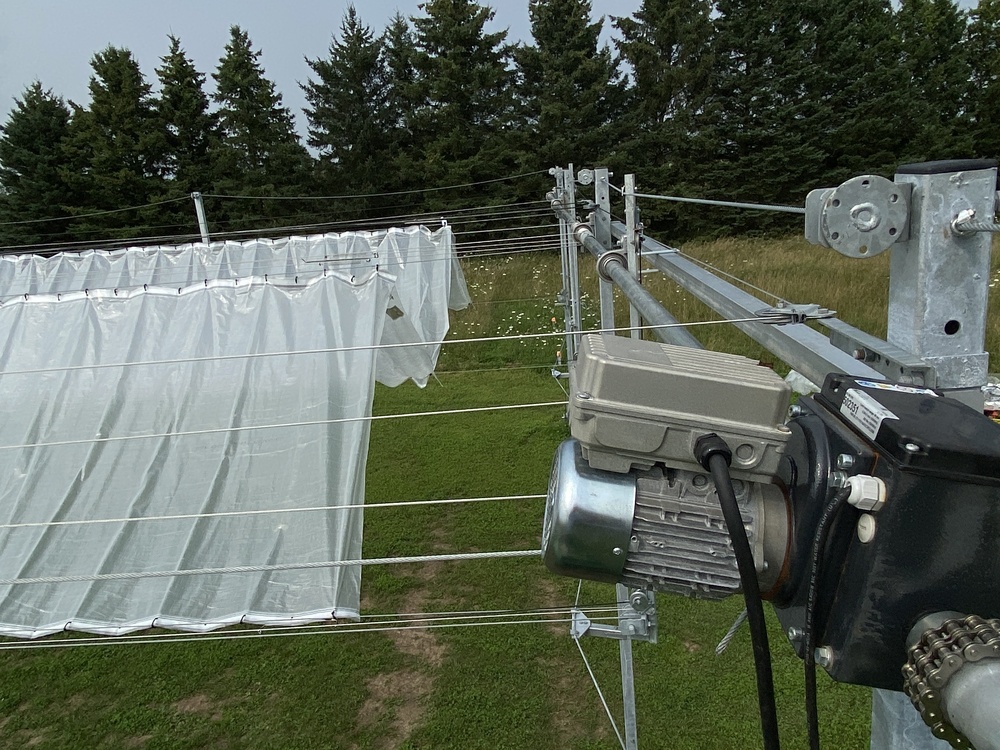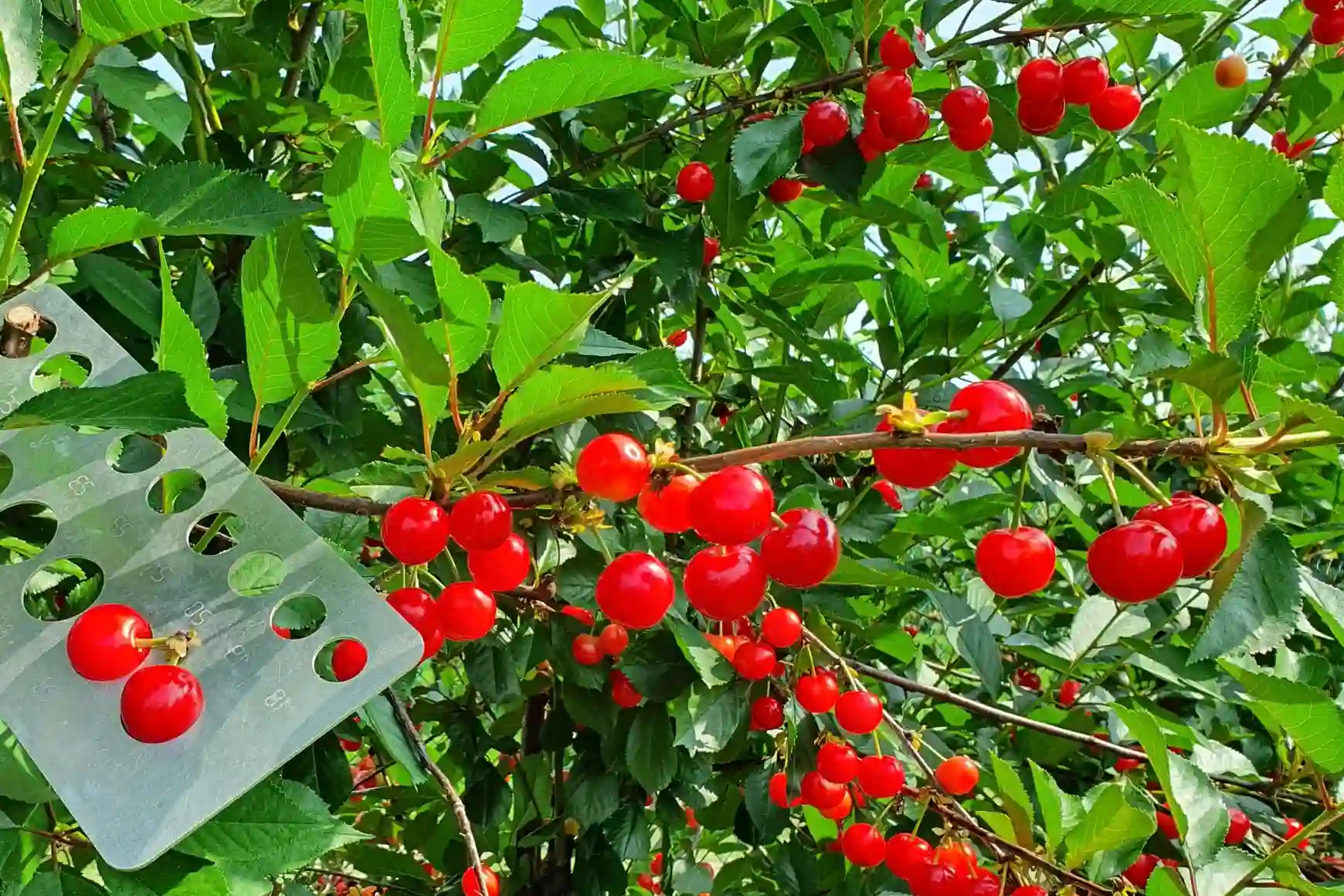Not a greenhouse, not traditional rain covers, but a new cultivation system: Cravo Equipment LTD has recently introduced the Automatic Auto-Dry Rain Shelter to the market, which is a cover system with retractable roof and walls, automated.
The Canadian company has been designing retractable covering systems for about forty years, but the novelty is that the new system, launched less than a month ago, has the advantage of being 'low-cost' compared to the previous one. It is not a cultivation system specifically for cherry orchards, but for about a decade, in the previous and more expensive version, automatic retractable roof greenhouses have also been used for cherry cultivation.
Cravo's Automatic Auto-Dry Rain Shelter is capable of modifying and optimizing the cultivation environment. If used to its full potential, the system, besides protecting against adverse weather events, can anticipate harvests, improve pollination, increase fruit size, and reduce the need for treatments.
Dugald Close, a professor of horticulture at the Tasmanian Institute of Agriculture at the University of Tasmania, after conducting scientific experiments, has described the Automatic Rain Shelter as the 'Rolls-Royce' of covers for cherry orchards. Of course, the system requires an experienced operator for the initial investment to be repaid".

Automatic Auto-Dry Rain Shelter closes 10 hectares in 5 minutes
The Automatic Auto-Dry Rain Shelter has retractable woven polyethylene covers. Through sensor technology, the system can autonomously decide when to close and when to open, either partially or fully, or it can be manually operated.
"In 5 minutes, you can close up to 10 hectares of orchard," Richard Vollebregt, president and CEO of Cravo Equipment LTD, told us during a lengthy conversation. Cravo, based in Ontario, Canada, developed the first motorized retractable covering system in 1982.
The primary advantage of the new Automatic Auto-Dry Rain Shelter is to safeguard production when the weather threatens rain, hail, strong winds, or when frost is expected: "First and foremost, cherry growers seek protection," Vollebregt explained. "But the truth is that the value of production depends on the quantity produced and the quality".
Growers who have used previous models of automatic retractable orchard covering systems have observed better pollination, in addition to protection from rain, frost, sunburn, and wind.
They have achieved higher yields and better fruit size. By anticipating the harvest and arriving on the market earlier, they can command higher prices. By covering the orchard and closing the system at the right time, similar to a greenhouse, they can advance flowering and promote pollination.
Cherry growers aim to avoid problems like cracking or other issues arising from adverse weather conditions, but without effective pollination, there is no product to protect.
Among the advantages of the automated retractable roof and wall cover system, according to Cravo's president, is also helping the plant accumulate sufficient chilling hours: "Adequate chilling accumulation during the winter season is crucial; there are areas of the world struggling to achieve the right chilling accumulation."
"The system can be used to shield trees from the sun and thus help prevent them from accumulating heat on sunny winter days. After the pollination phase, as harvest time approaches, temperatures rise, and if it gets too hot due to water stress, we lose caliber. With this automatic system, growers can close the roof and walls by a certain percentage, and the system functions like an umbrella".
"With fixed covers, there's a risk that the fruits become less consistent. Fixed covers can be an advantage, but they can also have negative effects on the harvest. With the Automatic Auto-Dry Rain Shelter, the cherry grower can control the climate to obtain larger, firmer, and sweeter cherries. On one hand, the system protects the cherries, and on the other, it helps achieve a more lucrative harvest".

The system is automated with predefined parameters
The Automatic Auto-Dry Rain Shelter can be manually operated, but it is equipped with external sensors to facilitate opening and closing under specific conditions. A very clear video explains how the system can self-regulate (you can find it here).
Essentially, as temperatures increase and weather conditions vary, the percentage of covers that will be open or closed, as well as the percentage of wall opening or closing, changes. The system also takes humidity into account. The parameters triggering autonomous system activation can always be manually set to achieve the desired effects.
Cravo's automatic covers, in the version preceding the recently launched one, are already in use in various countries for cherry orchards, naturally in countries where the per-kilogram remuneration is sufficient to recover the investment in a reasonable timeframe. The system is present in Australia, New Zealand, Hungary, South Africa, and the United States.
Among the testimonials from long-time users is Todd Wilmoth of Cherry Ridge Farms in Kennewick, Washington. In an interview last spring, Wilmoth did not hide his enthusiasm for the system, which allowed him to have an early bloom by about twenty days during the previous season.
However, the cherry grower emphasized the need to understand the technology well. In other words, merely purchasing the Automatic Auto-Dry Rain Shelter is not enough to enjoy the promised benefits; one must become familiar with it, study it carefully, all while understanding one's orchard and the company's commercial objectives".

The cost of the system ranges from 11 to 20 dollars per square meter
Richard Vollebregt, President and CEO of Cravo Equipment LTD, recently visited Italy. The Italian company Retilplast supplies the covers for the new system, the Automatic Auto-Dry Rain Shelter. However, there are no Italian cherry orchards with this system installed yet: "Until now, the investment has been very high for the Italian market," Vollebregt specified to Cherry Times, "and we have not promoted it in Italy."
The new system, described by the company as "low-cost," requires an investment ranging from 11 to 20 dollars per square meter, compared to the previous system, which cost 30/35 dollars per square meter, excluding installation costs. "The cost per hectare of the orchard will be proportionally higher for 5 hectares due to economies of scale. Larger projects cost less," Vollebregt explained.
The system's lifespan depends on how it is used: "The structure and cables are galvanized steel and can last up to 30 years. As for the drive system, its lifespan can also reach 30 years. Regarding the covers," Richard Vollebregt concluded, "it depends on usage: exposure to UV rays, the amount of chemicals, and wind. Usually, the lifespan varies between 3 and 6 years".
Barbara Righini
Cherry Times - Tutti i diritti riservati













